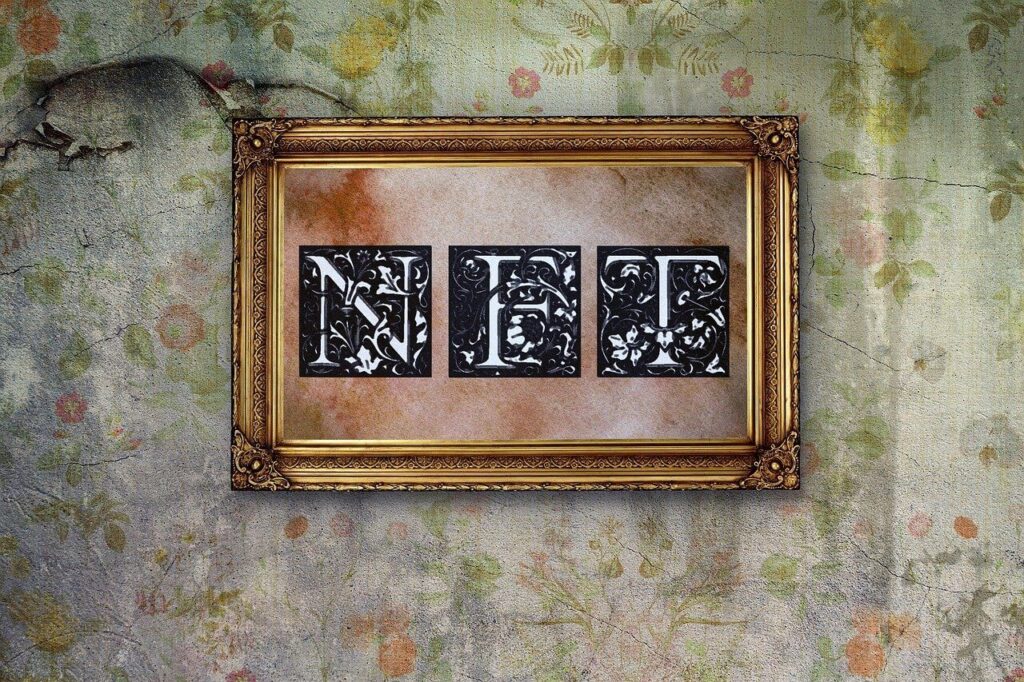The Many Use Cases of NFT— Current and Future
An updating topic focusing on NFT use cases as Web3 technology evolves.

The blockchain and cryptocurrency sector (aka Web3) is perpetually evolving. We’re seeing new projects and dapps being released on a daily basis, let alone the various Web3 hackathons happening every quarter by blockchain networks. I reckon that’s one of the main reasons why Encode Club raised $5 million in funding.
Below we explore the many use cases Web3 think tanks are working on or will work on in the future. Some are just ideas while some are MVPs or alpha releases. We’re keeping this list on a rolling basis and will update it as new projects and ideas emerge.
White-Label NFT Marketplace
Think Shopify but for NFT. Essentially, anyone can build their own NFT marketplaces like OpenSea or Rarible. This is exactly what NFTically is doing. Although I’m not a fan of its name, I think what they’re doing is disrupting the stronghold that OpenSea has in the NFT market.
Dynamic NFT
This is not new as it is something I explored previously. Instead of being static like digital art, a dynamic NFT evolves. This paradigm is contrary to popular belief that blockchain is immutable. You do this by storing the dynamic content of the NFT as its metadata. It’s pretty simple actually as I released a few of these NFTs. The underlying use cases for this category alone are pretty immense.
Programmable NFT
This is also not new but sufficiently interesting to be on this list. Similar to dynamic NFT, you essentially embed Javascript code in an NFT to do some sort of programming logic — such as a virtual pet game. OpenSea actually lets you do this conveniently by inserting an external link or you can upload the code on IPFS and include it in your NFT as metadata.

Appraising Value of NFT
This is relatively new and I only heard of this from Jake Brukhman from CoinFund during his interview with DeFi Dad. The idea is we could get an appraised value for our NFT and store them on smart contract.
Using NFT as Collateral
If the market has successfully accepted the notion of having NFT value appraised, this could lead to using NFT in collateralized lending. Say you own BAYC or CryptoPunk NFT, you can use them as collaterals to borrow out cryptos. This idea would most probably fall into the over-collateralization segment since value of NFT can be volatile.
NFT For Document Verification
I love joining hackathons because I love to win. This emotion grew in me from being an athlete when I was young. So I created a Web3 project called Mintnite which is essentially a token minting dapp that empowers anyone to mint NFT tokens without having to code. With this Web3 app, you could “chain” a copy of your document on-chain as NFT.
I tried to keep the UI/UX simple. You only need to connect your MetaMask wallet, give a name (and symbol) for your smart contract (you don’t need to do coding), deploy your contract on Ethereum and start uploading your digital files to be stored as NFTs. But you do need to pay for your own gas.
The idea is to prove the existence of a file at a point in time and to prevent tampering. It currently accepts public and private documents. Public files are stored on-chain where the files’ contents together with their names and descriptions are visible to all. Public documents can be like education degrees, press releases (to fight fake news) and more. These documents are also searchable on the site. But private files only have their file hashes recorded on the blockchain and the documents are not searchable.
Each digital copy of the authentic document has a link to a block explorer (like Etherscan) that attests to its authenticity and time of existence. To further reinforce the authenticity of the notarized files, a user could verify their smart contract on the block explorer of the blockchain that they utilized.
Speaking of the devil, 100,000 verifiable digital diplomas were already issued by Maharashtra State Board of Skill Development (MSBSD) on the Polygon blockchain.
NFT For Product Authentication
A Japanese company called Wraptag is spearheading this area. They have created a patent-pending NFT certificate that could attest to the authentication of a product you’re purchasing. Merchandise that implements this solution would have an NFC tag embedded with an NFT (don’t be confused when reading NFT and NFC). You’d then use their decentralized web-based application (a wallet I believe) to scan the tag to verify if the product is authentic.
WrapTag Inc. is thrilled to announce the successful mainnet launch of WrapTag Blockchain on top of #Avalanche Subnet.
— WrapTag (@wraptag_io) June 23, 2022
The chain is now indexed and verified by @AvascanExplorer Team.#AVAX https://t.co/69nBgwWfEk
They utilize Avalanche’s subnet as the blockchain (technically Avalanche is a DLT and not a blockchain but anyway) to store the NFTs while the product data is located in IPFS network. Avascan, Avalanche’s block explorer, is responsible to verify the authenticity of each scan on a merchandise.
Now, a forger could potentially recreate the entire solution from the product itself to the NFC tag and even the subnet if they want to but the counterfeit trail should stop at Avascan.
To the untrained eyes, it could be difficult to differentiate what is fake or not since Avascan is not built as a consumer-friendly tool. I’m unsure if Avascan is fully open-source and if it is, someone could easily fork it and create a counterfeit version and call it maybe avascn.info (with a missing “a” in the word scan) and fool the consumer. I wish to see this use case succeed but let’s see how it works out.
NFT Ticketing
I actually spent a good 6 months in 2018 thinking, tinkering and finding excuses to use blockchain for ticketing. I must say, all reasoning leads to the drain. Blockchain is just not made for ticketing. As a consolation, we could probably use NFT to create novelty value for tickets but beyond that, it’s too expensive and too slow for the ticketing industry.
My previous ticketing startup, 1Krowd, moved from blockchain to facial recognition technology, before it was killed by COVID-19. You may read all about it here.
NFT Articles
Mirror.xyz has an interesting use case of storing your posts (called entries) as NFTs. Here’s a guide on how it actually works and here’s my first NFT entry article, below.

You could set a price of your article’s NFT where readers could contribute by purchasing it. The burning question I had was whether I could edit the article after publishing it since it’s an NFT. The answer is “The content of your entry will be editable, but the values defined above are permanent, and will not be editable after publishing.” – Mirror.xyz
To avoid hefty gas fees on Ethereum, they use Optimism layer-2 chain. In fact, minting is free.
This platform is reminiscent of Steemit, probably the first blogging platform on blockchain, launched in 2016. Its heyday is evidently over. Could Mirror.xyz learn from Steemit mistakes and offer a better all-around experience? Let’s hope for that.
But one inherent issue that I experience across all dapps is delay. At times, it takes some time to load the dashboard and intermittently requires a couple of seconds (up to 7 secs) to save my article draft.
NFT Identity
A quick googling resulted in quite a couple of projects in this segment. I’ve seen some myself but I’m not sure who’s leading the race. The idea is simple – store your personal ID as NFT. I’m assuming there’s some privacy feature in place.
But one major concern is how do they stop someone from creating a fake NFT ID? Anyone with a forged passport could probably scan their forged document and put it on chain and claim that’s their real ID. Thus, there should be an authority trusted by the network that could only issue these IDs. So far, the most robust identity management system on blockchain that I’ve seen comes from Hyperledger Aries and Indy.
One major entry into this self-sovereign identification league is Polygon ID which claims to enable you to own your ID with complete privacy utilizing zero-knowledge proofs. Self-sovereign here means you own your own ID, not your government or anyone else. Here’s how Polygon ID works in a nutshell – there should exist a trust between the Verifier (e.g: YouTube) and Issuer (e.g: government) for verifying the claim (e.g: are you above 18 years of age?) of the holder (e.g: you). Thus, for this independent identification platform to proliferate, Polygon needs to onboard numerous Issuers such as governments, public institutions, universities/colleges, clubs, applications, content and service providers, and a lot more. It’s obvious there’s a chicken and egg problem to be solved here.
NFT Merchandise
I came across this idea when I was chatting with Ron Martinez. His NFT shirt idea lets you design your NFT on t-shirts. This could bridge the digital and physical world by creating rare and unique NFT merchandise. You could verify each NFT by printing a QR code on the shoulder that links to a block explorer.
A compelling use case within this use case would be having celebs’ merchandise imprinted with these NFTs making them more valuable in the market, and thus tradable. If this works, it could drive another innovation – a physical NFT marketplace.
NFT Certificate
This is quite a no-brainer. Storing a certificate as NFT to prove its authenticity and origin. Some blockchain academies have already been powering their certificates with NFTs such as Encode Club. You could also use Mintnite to create NFT certificates without writing a single line of code. Best of all, it’s free, except that you need to pay for gas fees. You could, however, request for native tokens to cover that cost.
NFT Memorabilia

This is a natural extension of the NFT digital art use case where you get to store rare or unique-to-you memorabilia within an NFT. Japanese largest rail network, J.R. Kyushu, is currently adopting this by issuing NFT memorabilia as a way to prove that you rode their trains. This might bode well with tourists, especially when many may wish to have a once-in-a-lifetime experience of being on their famous Shinkansen bullet train. I know I was one of these folks.
